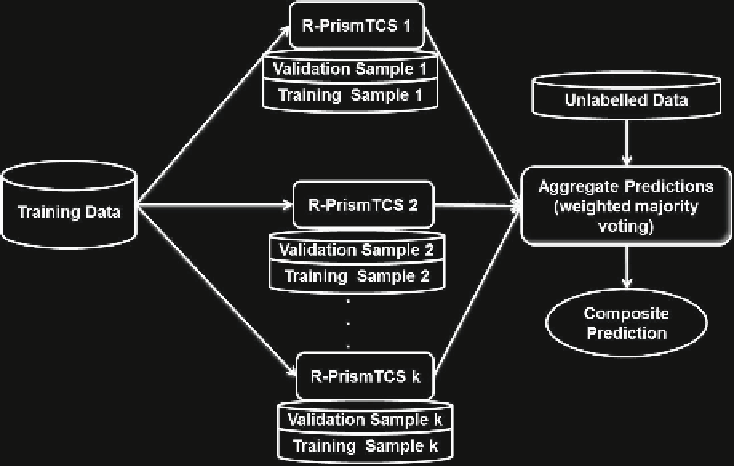Database Reference
In-Depth Information
Fig. 1.
The architecture of the Random Prism ensemble classifier.
Prism's classification accuracy is superior to that of RrismTCS's. Furthermore
results published recently in [
20
], show that Random Prism's potential unfolds
when there is noise in the training as well as in the test data. Here Random
Prism clearly outperforms PrismTCS [
20
].
However, this paper is more concerned with the scalability of Random Prism
to large datasets. One would expect that the runtime of Random Prism inducing
100 base classifiers is approximately 100 times longer, compared with PrismTCS,
as Random Prism induces base classifiers with a bag of size
N
for each base clas-
sifier, where
is the total number of training instances. Yet, this is not the case
according to the results published in [
20
]. The reason for this is the random com-
ponent in R-PrismTCS, which only considers a random subset of the total feature
space for the induction of each rule term. Thus the workload of each R-PrismTCS
classifier for evaluating candidate features for rule term generation is reduced by
the number of features not considered for each induced rule term.
N
3 The Parallel Random Prism Classifier
This section addresses our proposal to scale up Random Prism ensemble learner
by introducing a parallel version of the algorithm. This will help to address the
increased CPU time requirements, and also the increased memory requirements.
The increased memory requirements are due to the fact that there are
k
data
samples of size
N
required if
k
is the number of R-PrismTCS classifiers and
N
the number of total instances in the original training data. If
k
is 100, then

Search WWH ::

Custom Search